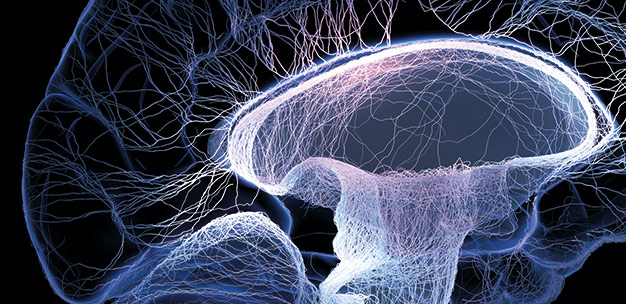Research on the role of brain inflammation induced by stroke spurs work on therapeutic targets
Published online 6 March 2015

Inflammation could be the key to curbing brain injury caused by stroke.
© Johan Swanepoel/iStock/Thinkstock
Stroke is a severe, often fatal, condition that affects an estimated 15 million people worldwide each year. It is the second most common cause of disability and of death in people aged 60 and over. Developing new approaches for treating stroke is particularly critical in Japan, which is rapidly becoming the world's most 'super-aged' nation, with more than one-fifth of its population over the age of 65 as a result of long life expectancies and low fertility rates.
Currently, the only widely approved drug for stroke treatment is tissue plasminogen activator. To be effective, this drug must be administered within approximately three to five hours from the onset of a stroke ― a very short time frame in which to diagnose the condition, transport the patient to hospital, and select and administer the drug. Hence, researchers have tried to find other points at which therapeutic intervention is possible.
This question has occupied Akihiko Yoshimura and Takashi Shichita of Keio University's School of Medicine for many years. "Inflammation after stroke was known to promote further injury of the brain, but it was not well understood," notes Yoshimura, "so we decided to clarify the inflammation mechanism in order to find a new target for stroke therapy."
In 2009, Yoshimura and colleagues published a paper in Nature Medicine that established the role of a major inflammation system known as the interleukin-23-interleukin-17 axis in brain injuries resulting from ischemic stroke, the most common form of stroke that occurs when blood vessels in the brain are blocked. The researchers also identified T lymphocytes, a group of white blood cells that localize in infarction areas after brain injury, as a therapeutic target for reducing inflammation and damage resulting from insufficient blood supply1.
Using a mouse model, they showed that another class of white blood cells, called macrophages, produced interleukin-23, a protein that is active during the initial phases of brain injury. In addition, and contrary to previous thinking, they discovered that the main source of interleukin-17 was a subset of T lymphocytes known as γδT cells. This was a significant finding since interleukin-17 was found to play an important role in inflammation, which amplifies the damaging effects of an infarction during the delayed phase of ischemic brain injury.
The researchers showed that brain injury can be curbed by reducing the number of γδT cells, even 24 hours after stroke onset. Yoshimura notes that after these results were published, more researchers have begun investigating inflammation after stroke events.
Since the 2009 study, Yoshimura and Shichita's team has been investigating the mechanism of interleukin-23 expression in infiltrated macrophages2. They are currently exploring the role of inflammation in order to develop ways to repair damage to the brain. "The pathology of brain injury depends on the balance between destructive tissue inflammation and repairing inflammation," explains Yoshimura.
He hopes that these findings will enable researchers to develop new drugs that will both block fatal strokes and speed the recovery of stroke victims from neural disorders.
References
- Shichita, T. et al. Pivotal role of cerebral interleukin-17-producing γδT cells in the delayed phase of ischemic brain injury. Nature Medicine 15, 946-950 (2009). | article
- Shichita, T. et al. Peroxiredoxin family proteins are key initiators of post-ischemic inflammation in the brain. Nature Medicine 18, 911-917 (2012). | article